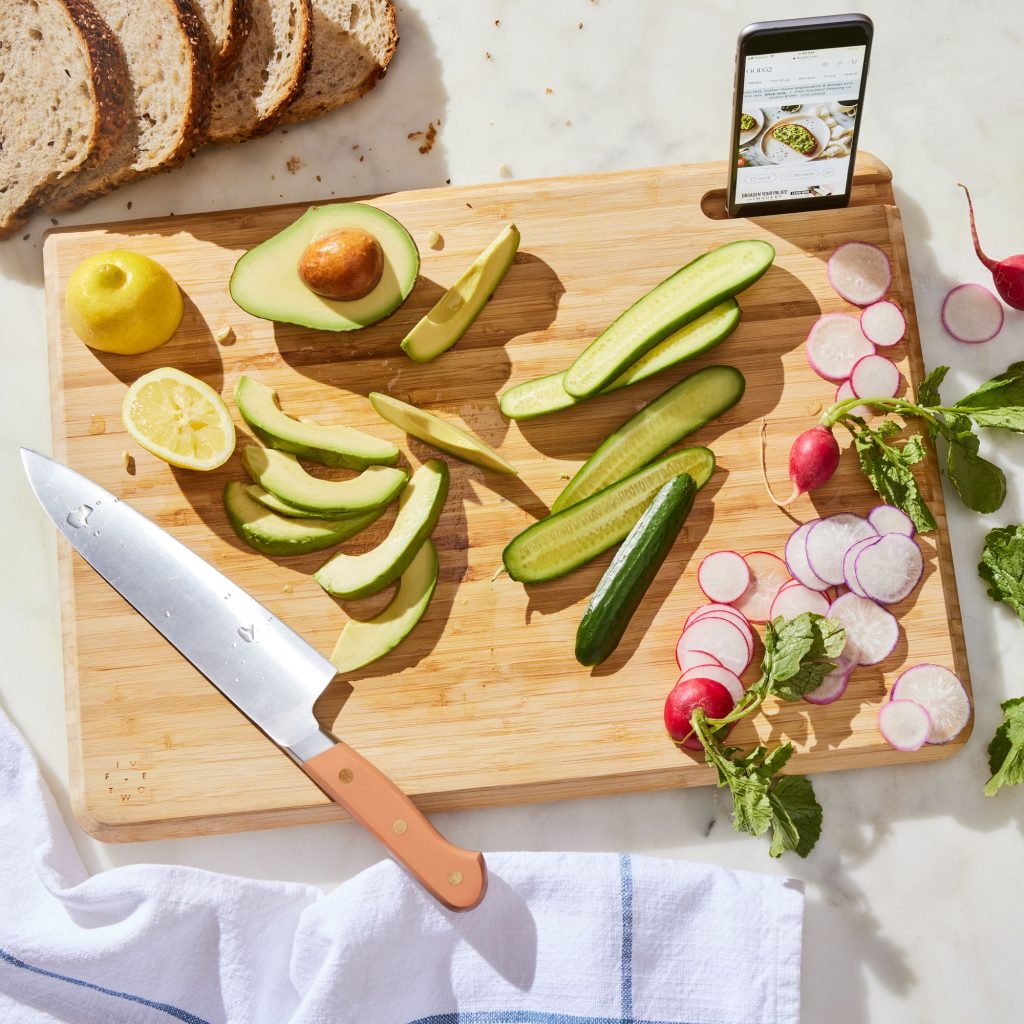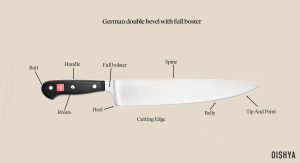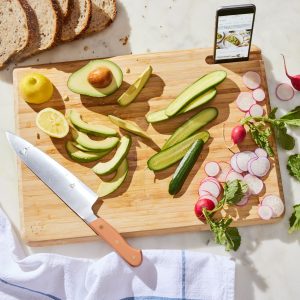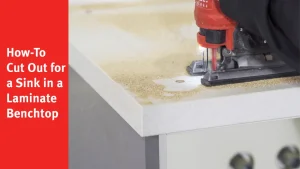Where you place your cutting boards in the kitchen can make a big difference in how smooth and enjoyable your cooking feels. Imagine reaching for the perfect board without digging through clutter or worrying about hygiene.
You want a spot that’s easy to access, keeps your kitchen tidy, and helps you cook faster. You’ll discover smart, simple ways to store your cutting boards so they stay in great shape and your kitchen stays organized. Keep reading to find the best spots that work for your space and style.
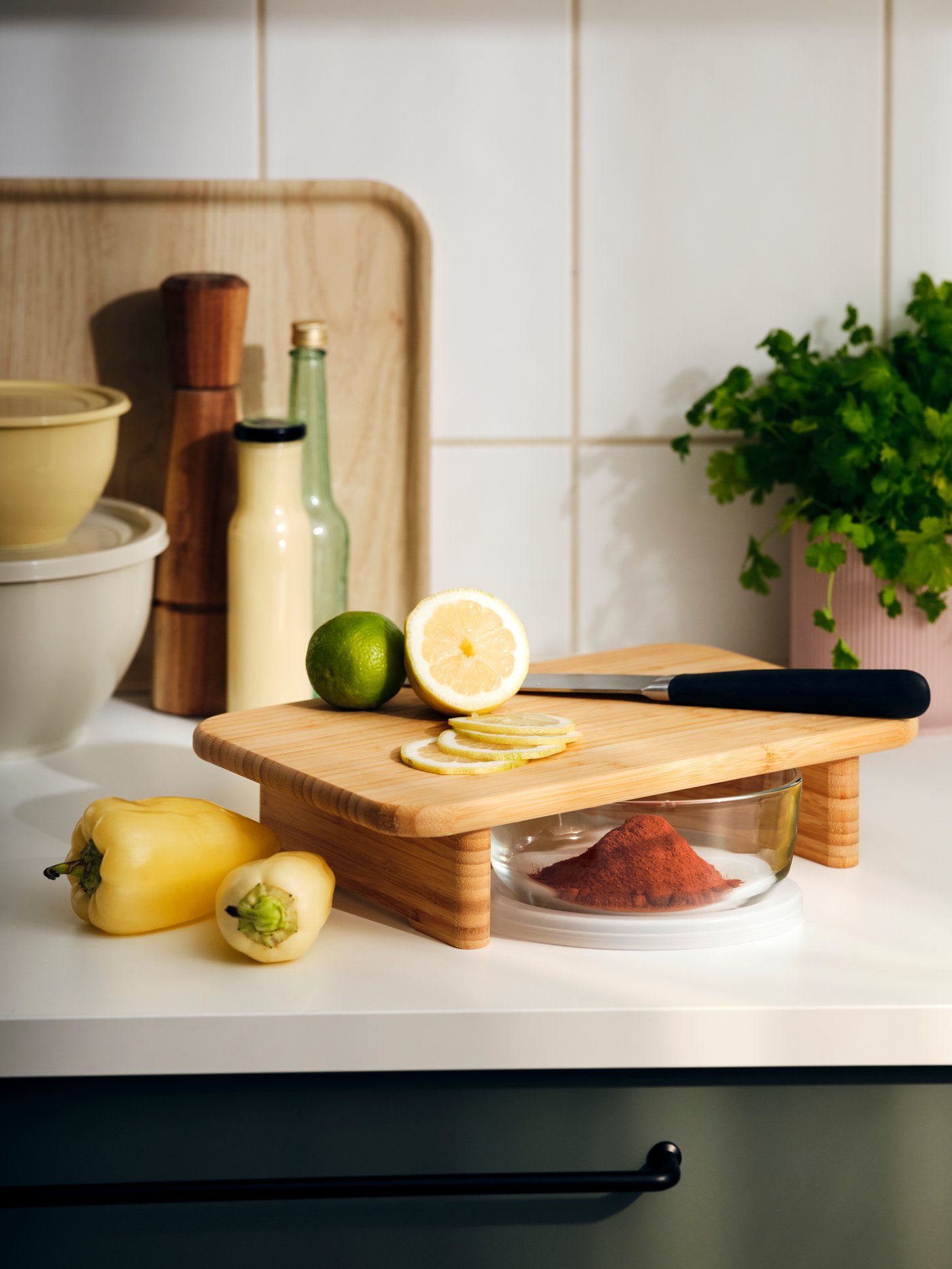
Credit: www.ikea.com
Choosing The Right Spot
Choosing the right spot for cutting boards in your kitchen can make cooking easier and safer. The location should fit your kitchen flow and keep your workspace tidy. Think about where you spend most of your prep time and how you move between tasks.
Near The Prep Area
Keep cutting boards close to the prep area for quick access. This saves time moving back and forth. You can chop vegetables and slice meat without leaving your main workspace. It helps keep your kitchen organized and your tasks smooth.
Close To The Sink
Placing cutting boards near the sink makes washing easier. Clean boards right after use to avoid bacteria buildup. This spot helps with quick rinsing and drying. It keeps your kitchen more hygienic and your boards ready for the next use.
Accessible Storage Zones
Store cutting boards in easy-to-reach places like drawers or shelves. Use vertical racks or slots to save space. This keeps boards neat and prevents damage. Accessible storage zones make grabbing and putting back boards simple and fast.
Built-in Storage Solutions
Built-in storage solutions offer a smart way to keep your cutting boards organized and easily accessible without cluttering your countertop. These options blend seamlessly with your kitchen design, making your prep area tidier and more efficient.
Pull-out Drawers
Pull-out drawers designed specifically for cutting boards make grabbing the right one quick and hassle-free. They slide smoothly, allowing you to store multiple boards of different sizes vertically or horizontally.
Imagine reaching for a drawer instead of hunting through a stack. It saves time and keeps your boards from warping or scratching each other.
Cabinet Inserts
Cabinet inserts create dedicated spaces inside your cabinets to hold cutting boards upright. These dividers keep boards separated, preventing damage and making it easier to find the one you need.
They work well if you already have deep cabinets and want to maximize that space. Plus, they keep your cutting boards out of sight but close at hand.
Under-counter Slots
Under-counter slots are narrow vertical compartments built into your kitchen island or base cabinets. They offer a clever way to tuck cutting boards away without sacrificing storage space.
This setup keeps boards accessible yet hidden, maintaining a clean look. Would you prefer your cutting boards within arm’s reach but off the countertop?
Wall-mounted Options
Wall-mounted options offer a smart way to keep your cutting boards within easy reach while freeing up valuable counter and cabinet space. These solutions not only help organize your kitchen but also add a touch of style. Let’s look at some practical ideas you can try in your kitchen today.
Hooks And Racks
Hooks and racks are simple yet effective for storing cutting boards. You can install sturdy hooks on a backsplash or inside cabinet doors to hang boards of different sizes.
This setup makes grabbing the right board quick and easy. Plus, hanging boards allows them to dry thoroughly, reducing the risk of bacteria buildup. Have you noticed how cluttered your countertops get when boards just lie flat? Hooks solve that instantly.
Magnetic Strips
Magnetic strips aren’t just for knives—they work well for cutting boards with metal handles or edges. Mount a strong magnetic strip on your kitchen wall, and your boards stick securely.
This keeps boards visible and accessible without taking up shelf space. It’s a modern, clean look that fits well in minimalist kitchens. What if you could turn your kitchen wall into a functional display? Magnetic strips help you do just that.
Pegboards
Pegboards give you flexible storage options for cutting boards and other kitchen tools. You can customize the arrangement by moving pegs around to fit boards of various shapes and sizes.
This method keeps your kitchen adaptable and organized. If you like changing your kitchen layout or adding new tools frequently, pegboards offer a dynamic way to manage your space. Have you tried using vertical space creatively? Pegboards might be your best friend.

Credit: www.elmwoodreclaimedtimber.com
Creative Countertop Ideas
Bringing creativity to your kitchen countertops can transform your cooking space into an organized, efficient, and aesthetically pleasing area. With a little imagination, your cutting boards can become an integral part of your kitchen’s decor, rather than just a necessity. Let’s explore some creative countertop ideas that make storing cutting boards both practical and stylish.
Stackable Boards
Stackable boards are a lifesaver for those with limited countertop space. They not only save room but also add a layer of convenience to your cooking process. Imagine having a set of nesting boards, each with its specific use, neatly stacked and ready for action.
- Choose boards with different colors or labels for veggies, meats, and bread.
- Stack them by size, with the largest at the bottom for easy access.
This setup not only keeps your counters tidy but also makes meal prep more efficient.
Decorative Stands
Why hide your beautiful cutting boards when they can double as decor? Decorative stands offer a stylish way to display your boards while keeping them handy. Picture a sleek metal or rustic wooden stand holding your favorite boards upright on your counter.
- Choose stands that match your kitchen’s theme for a cohesive look.
- Mix and match board materials like bamboo, marble, or walnut for visual interest.
This approach not only showcases your personal style but also sparks conversation when guests visit.
Multi-use Trays
Multi-use trays serve as an ingenious storage option that goes beyond the typical cutting board holder. These trays can hold your cutting boards alongside other kitchen essentials, making them a centerpiece of functionality and design.
- Opt for a tray with compartments for spices, oils, and cutting boards.
- Use a tray with a handle for easy mobility around the kitchen.
Having everything in one place streamlines your cooking process and keeps the countertop clutter-free.
So, how will you make your cutting boards a standout feature in your kitchen? Whether you choose stackable boards, decorative stands, or multi-use trays, these ideas offer a blend of practicality and style. Embrace the opportunity to enhance your kitchen’s functionality and visual appeal with these creative solutions.
Space-saving Tips
Saving space in your kitchen is essential for easy movement and efficiency. Cutting boards can take up much room if not stored smartly. Use clever tips to keep your kitchen tidy and cutting boards accessible.
Vertical Storage
Store cutting boards upright to save drawer or counter space. Use a rack or a simple divider inside cabinets. This keeps boards easy to grab and helps air dry after cleaning.
Grouping By Size
Arrange cutting boards by size for neat storage. Place larger boards at the back or bottom and smaller ones in front or on top. This method helps you find the right board quickly.
Regular Decluttering
Remove cutting boards you rarely use to free up space. Check boards for wear and tear and discard old or damaged ones. Keep only the boards you need for daily cooking.

Credit: www.amazon.ca
Materials And Maintenance
Choosing the right cutting board material and maintaining it well can make a big difference in your kitchen’s hygiene and longevity of your tools. Each material has its strengths and care needs, which affect where you store and how you use your boards. Let’s break down the essentials to help you keep your cutting boards in top shape.
Choosing Board Types
Wood, plastic, and bamboo are the most common cutting board materials. Wood boards are gentle on knives and have natural antibacterial properties, but they need more care. Plastic boards are dishwasher safe and great for raw meats, but they can get scratched easily, creating grooves where bacteria hide.
Think about your cooking habits when choosing: do you chop mostly vegetables or raw meat? You might want separate boards for each to avoid cross-contamination. Also, consider size and thickness based on your kitchen space and storage options.
Cleaning And Drying
Cleaning cutting boards properly is crucial to avoid germs. After each use, wash your board with hot, soapy water and rinse thoroughly. Avoid soaking wooden boards, as excess water can damage the wood.
Dry your boards immediately with a clean towel, then let them air dry fully before putting them away. Storing a damp board invites bacteria and mold growth. Have you noticed how your wooden board lasts longer when you dry it carefully?
Avoiding Warping
Warping happens when boards absorb too much moisture unevenly. Wooden and bamboo boards are especially prone to this problem. Keep your boards flat and avoid leaving them in water or near heat sources like stoves or dishwashers.
Store boards upright or flat in a dry, ventilated place. If you spot slight warping, sometimes pressing the board under a heavy object can help restore its shape. How do you store your boards now, and could a small change prevent warping?
Frequently Asked Questions
Where Is The Best Place To Store Cutting Boards In Kitchen?
The best place to store cutting boards is near your prep area. Keep them in a cabinet, drawer, or on a wall rack. This ensures easy access and maintains kitchen organization. Avoid storing them in damp areas to prevent warping and bacteria growth.
How Can I Organize Cutting Boards Efficiently?
Organize cutting boards vertically in a cabinet or drawer using dividers. This saves space and keeps boards separated. You can also use wall-mounted racks for quick access. Proper organization extends their lifespan and improves kitchen workflow.
Should Cutting Boards Be Kept Separate By Material Type?
Yes, separate cutting boards by material type to avoid damage. Wood boards need dry storage to prevent cracking. Plastic boards are dishwasher-safe and can be stored together. This separation helps maintain hygiene and prolongs each board’s usability.
Can Cutting Boards Be Stored On Kitchen Countertops?
Cutting boards can be stored on countertops if space allows. Use a dedicated stand or holder to keep them upright. This keeps boards dry and accessible. However, avoid cluttering the countertop for a clean, functional kitchen.
Conclusion
Placing cutting boards in the kitchen helps keep cooking smooth. Store them near your prep area for quick access. Use vertical racks or drawers to save counter space. Clean boards after each use to stay safe and neat. Organizing cutting boards well makes cooking easier and faster.
Small changes can make a big difference in your kitchen. Try different spots to find what works best for you. Keep your kitchen tidy and enjoy cooking more every day.

